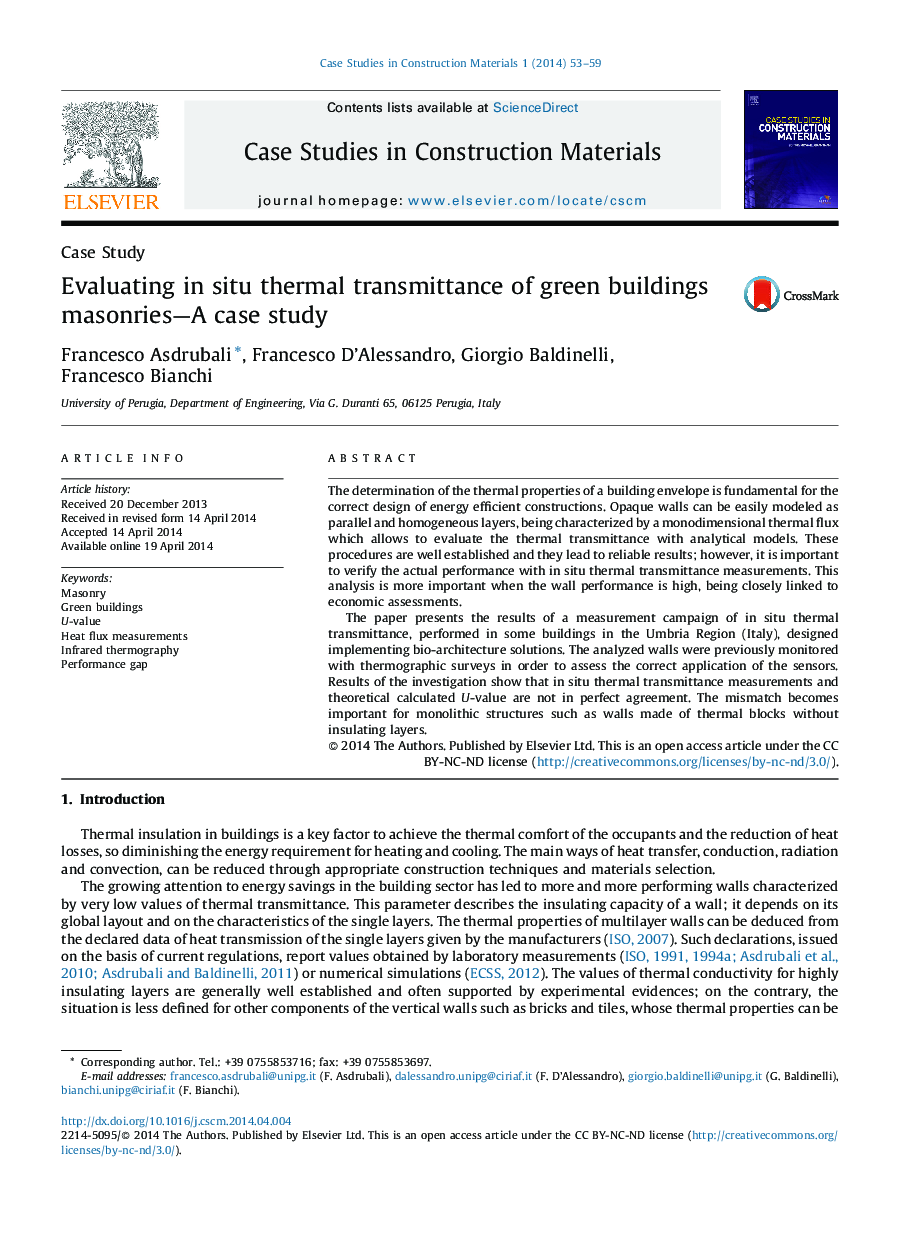| Article ID | Journal | Published Year | Pages | File Type |
|---|---|---|---|---|
| 250537 | Case Studies in Construction Materials | 2014 | 7 Pages |
•We evaluated six different green buildings masonries.•We calculated the thermal transmittance according to manufacturers’ data and design details.•We measured in situ thermal transmittance through heat flux sensors and temperature probes.•The comparison shows that generally the calculated values overestimate the actual thermal transmittance.•This problem is relevant especially in high energy performing buildings, such as nearly zero energy buildings.
The determination of the thermal properties of a building envelope is fundamental for the correct design of energy efficient constructions. Opaque walls can be easily modeled as parallel and homogeneous layers, being characterized by a monodimensional thermal flux which allows to evaluate the thermal transmittance with analytical models. These procedures are well established and they lead to reliable results; however, it is important to verify the actual performance with in situ thermal transmittance measurements. This analysis is more important when the wall performance is high, being closely linked to economic assessments.The paper presents the results of a measurement campaign of in situ thermal transmittance, performed in some buildings in the Umbria Region (Italy), designed implementing bio-architecture solutions. The analyzed walls were previously monitored with thermographic surveys in order to assess the correct application of the sensors. Results of the investigation show that in situ thermal transmittance measurements and theoretical calculated U-value are not in perfect agreement. The mismatch becomes important for monolithic structures such as walls made of thermal blocks without insulating layers.
